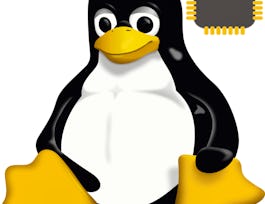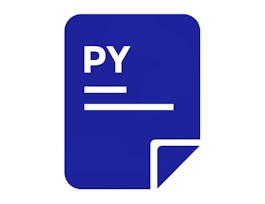This course will introduce you to all aspects of development of Soft Processors and Intellectual Property (IP) in FPGA design. You will learn the extent of Soft Processor types and capabilities, how to make your own Soft Processor in and FPGA, including how to design the hardware and the software for a Soft Processor. You will learn how to add IP blocks and custom instructions to your Soft Processor. After the Soft Processor is made, you learn how to verify the design using simulation and an internal logic analyzer. Once complete you will know how to create and use Soft Processors and IP, a very useful skill.



FPGA Softcore Processors and IP Acquisition
This course is part of FPGA Design for Embedded Systems Specialization

Instructor: Timothy Scherr
Sponsored by Mojatu Foundation
8,262 already enrolled
(90 reviews)
Recommended experience
What you'll learn
Skills you'll gain
Details to know

Add to your LinkedIn profile
4 assignments
See how employees at top companies are mastering in-demand skills

Build your subject-matter expertise
- Learn new concepts from industry experts
- Gain a foundational understanding of a subject or tool
- Develop job-relevant skills with hands-on projects
- Earn a shareable career certificate


Earn a career certificate
Add this credential to your LinkedIn profile, resume, or CV
Share it on social media and in your performance review

There are 4 modules in this course
This module introduces the concept of a soft processor in general, and of hardware design for the soft processor in particular. It presents an overview of soft processors, describing all the different kinds that are available from Xilinx, Altera, Microsemi, and Lattice and then goes into depth about the Nios II soft processor from Altera. The benefits of using soft processors to prevent obsolescence and provide flexibility are explained. The content guides you through a hardware design of the Nios II processor using Qsys, the Altera system design tool. Lastly, design of a custom instruction in the Nios II is presented, showing the versatility of the soft processor in an FPGA.
What's included
11 videos1 reading1 assignment1 discussion prompt
This module delves further into the development of soft processors, It describes the soft processor development flow in more detail, including the tools needed to develop software for the soft processor. It then introduces the Eclipse-based IDE for Nios II software development, and then shows how the output of the Qsys design is used to establish a Board Support Package (BSP) for the processor, which is necessary because the processor hardware design can be changed and the BSP software library must support any changes. Use of the BSP editor to configure the processor by programming control registers is demonstrated. Finally, the use of the custom instruction developed in Module 1 is presented, including the use of software macros to complete the implementation of the custom instruction.
What's included
8 videos1 reading1 assignment
Modern FPGA design is no longer centered on HDL module design as it is on acquisition and use of IP Cores. In this Module we will introduce IP cores including offerings from all the major vendors, Intel Altera, Xilinx, Microchip Microsemi, and Lattice. You will learn how to find, acquire, and use these cores.
What's included
6 videos1 reading1 assignment
As we work on more complex FPGA designs, the challenges to create an error-free design mount exponentially. Having a good grasp of the tools needed to verify correctness of design has become more and more important. After introducing simulation in previous sessions, in this module we will examine simulation with ModelSim in more depth by working through some examples. This will show the utility of simulation for verification and debugging. This module will also describe in some detail how the simulator works and how it achieves concurrency through the use of delta delays. As a final step in the debugging process, the internal logic analyzer SignalTap II is introduced.
What's included
8 videos1 reading1 assignment
Instructor

Offered by
Why people choose Coursera for their career




Learner reviews
90 reviews
- 5 stars
46.66%
- 4 stars
20%
- 3 stars
21.11%
- 2 stars
5.55%
- 1 star
6.66%
Showing 3 of 90
Reviewed on Aug 11, 2021
I was hoping to get more lecture material on writing testbench code.
Reviewed on Jul 31, 2023
Very interesting for demonstration purposes. There is much to be learned by working on your own afterwards with the notes taken.
Reviewed on Jun 11, 2021
Must-take Course for Hardware Engineeer. This course provides new concept about NIOS II 32-bit RISC Architecture and How HDL Simulation work
Recommended if you're interested in Physical Science and Engineering

University of California, Irvine

Microsoft

University of Colorado Boulder

Open new doors with Coursera Plus
Unlimited access to 10,000+ world-class courses, hands-on projects, and job-ready certificate programs - all included in your subscription
Advance your career with an online degree
Earn a degree from world-class universities - 100% online
Join over 3,400 global companies that choose Coursera for Business
Upskill your employees to excel in the digital economy



